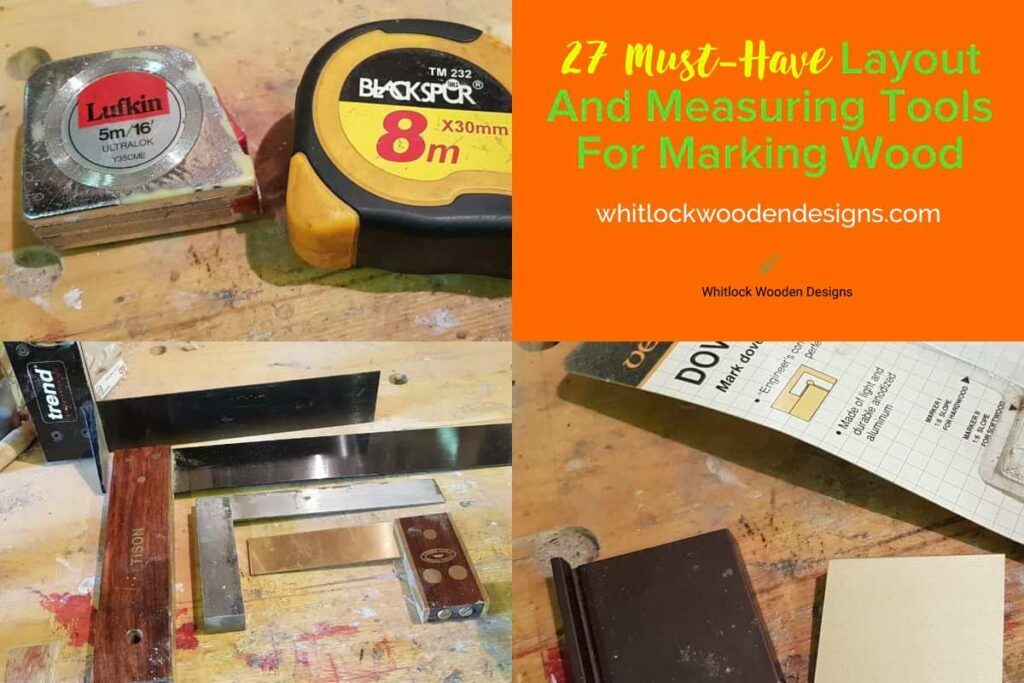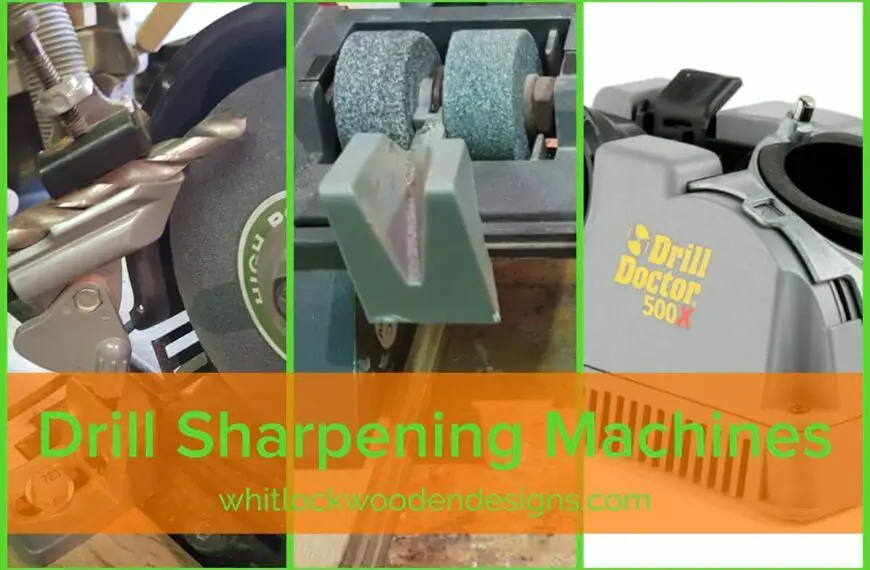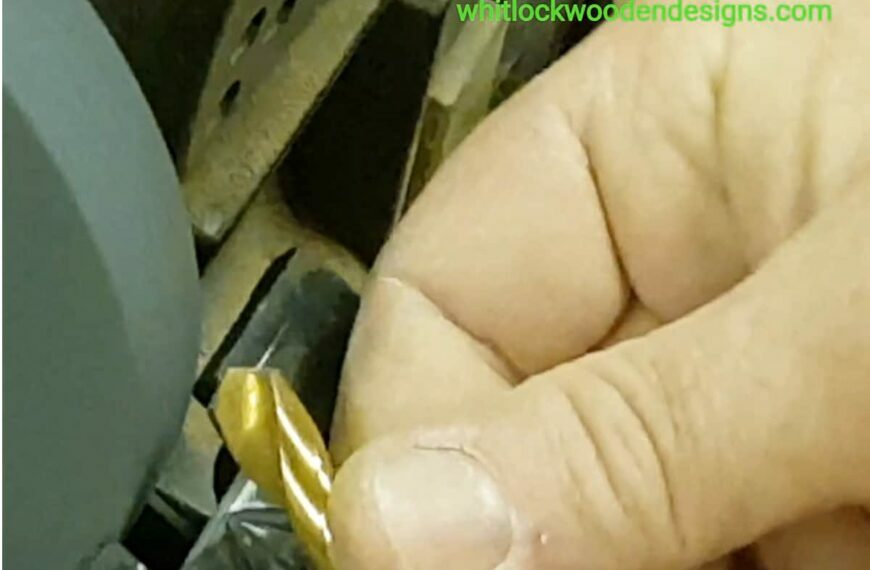I’m going to walk you through some of the best woodwork measuring tools. The basic tools to start woodworking are common across all trades, from carpenter’s to cabinet and furniture builders. The more specialist or desirable hardware depends on your craftwork.
You can source all of these on Amazon, and they are quite affordable with a great shopping experience.
What are the different types of marking out tools and their uses?
In this section, I have listed the basic marking tools for wood. These precision woodworking hand tools are in no particular order. I have also provided a short description of each hand tool and an image for identification from my own workshop.
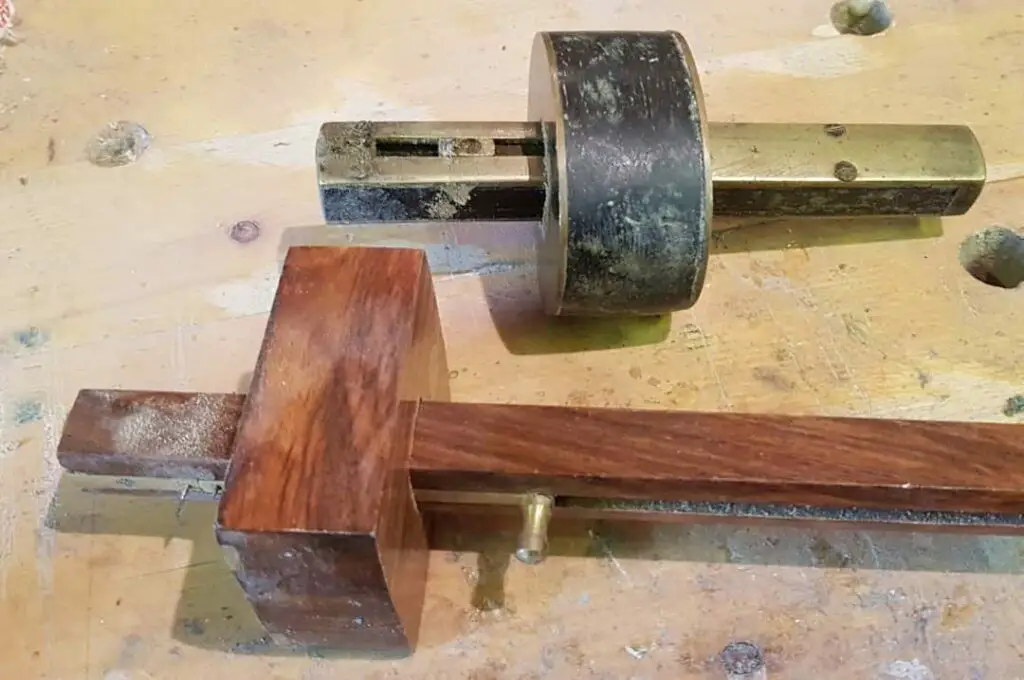
1. Rosewood & brass mortise gauges
A mortice gauge is used to set out the width of parallel lines along the grain. A solid brass nut keeps the shaft from slipping. It has two steel pins; one adjusts for sizing against your chosen mortise chisel or tenon joinery.
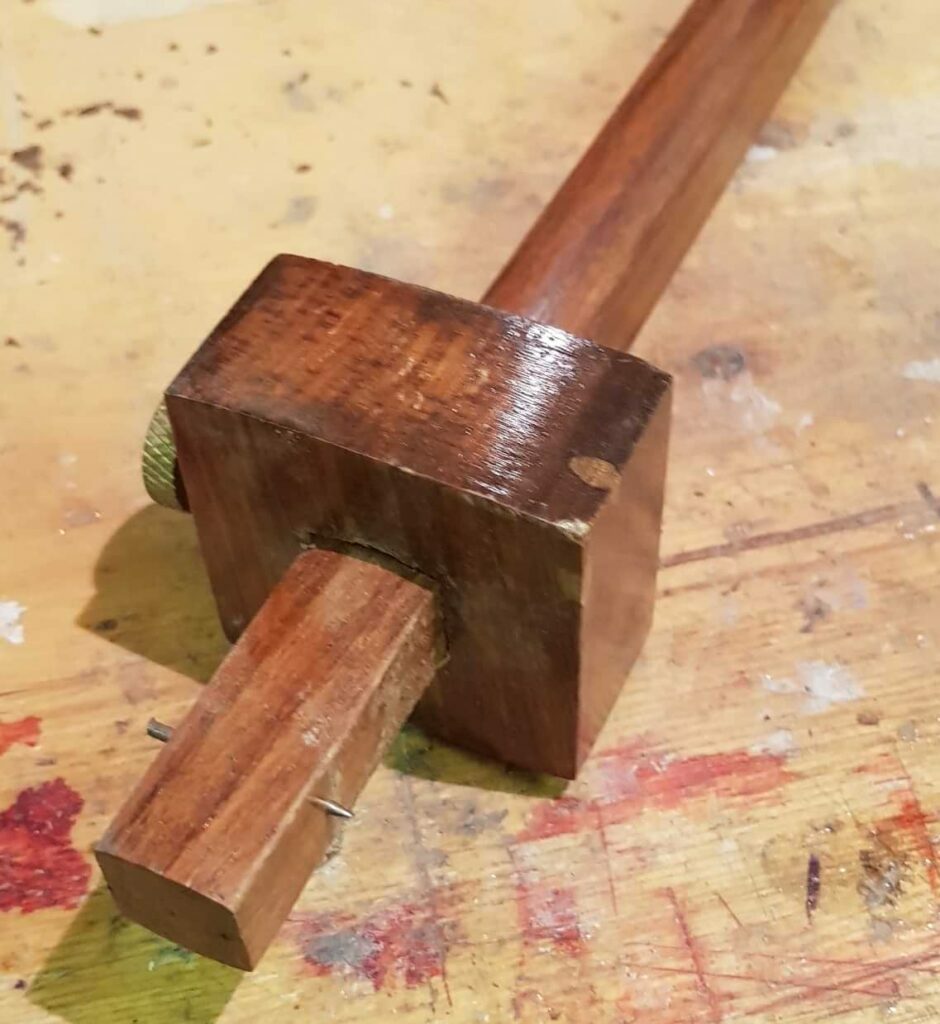
2. Traditional wood marking gauge
Different types of marking gauge are used to mark out wood surfaces. The traditional wood marking tools consist of a shaft with a sharp cutter or pin and a movable brass fence at the other. The fence keeps the cut line parallel with the workpiece edge for repeatability while thumb screws secure the shaft. The adjustable gauge can be set to any width, making it highly versatile for a chamfer or ripping.
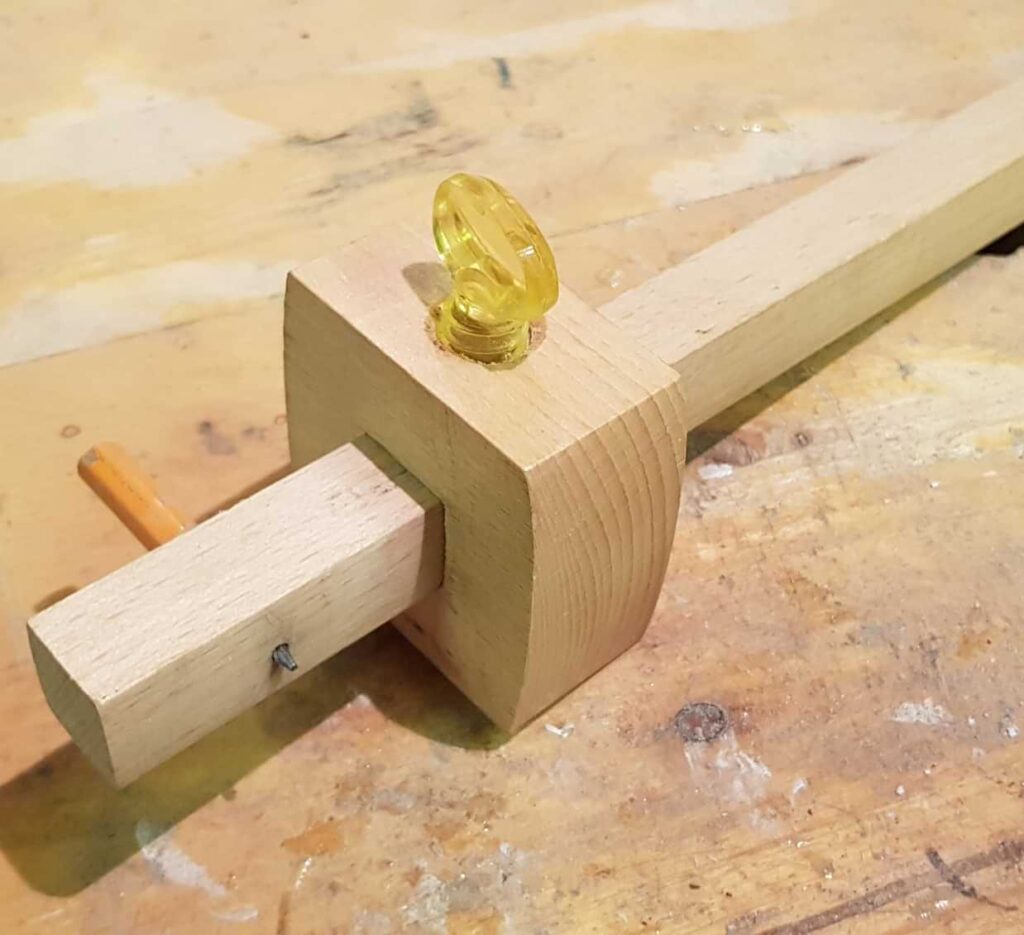
3. Pencil gauges
Similar to the above but with the pin replaced with standard pencils.
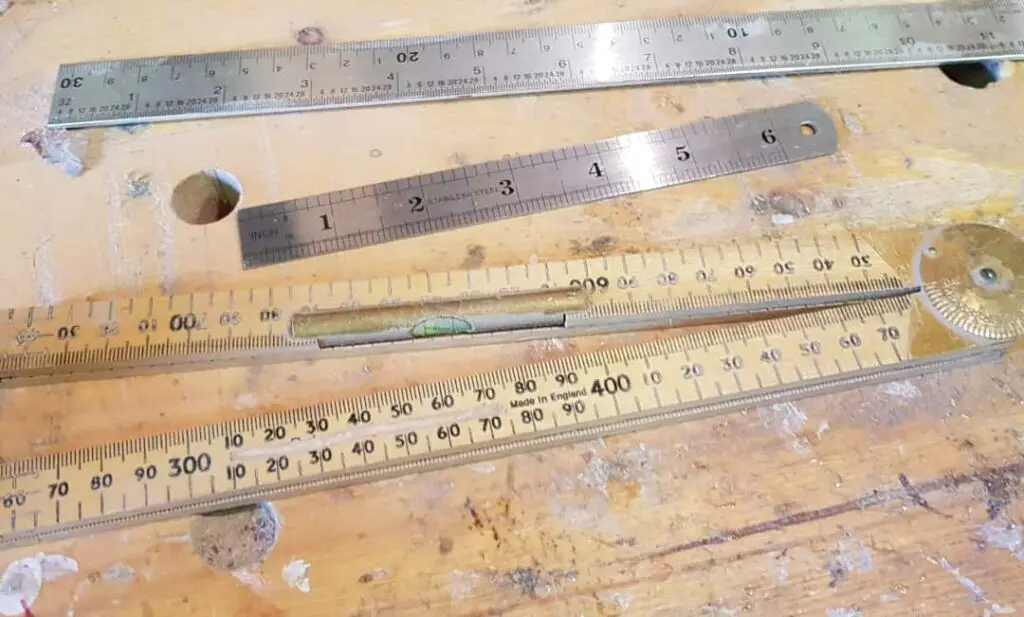
4. Steel rule and straight edge
When using a rule for marking out, it is crucial to first identify the overhang. The scales will let you choose incremental markings from 1 ⁄ 8″ to 1 ⁄ 64 “. Finally, inscribe your desired length along the edge.
Rules may be straight edges, but straight edges can’t be rules without an incremental scale.
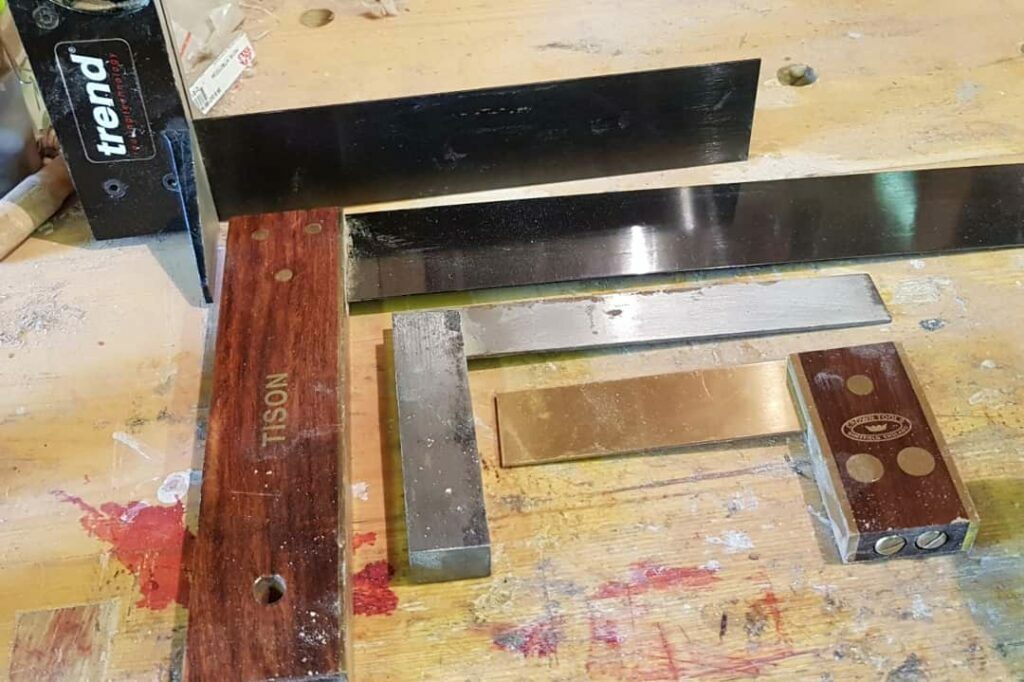
5. Woodworkers try square
A wooden try-square is used to try how square the project is or marking 90-degree angles on boards. The square in the name refers to the 90° angle. To try a piece of wood is to check if the faces are flat and square to each other. If you want something larger, look for framing squares.
With the Trend 3D square, you only have to turn the stock once, not four times.
Recommendation: when new, test for square along the blades length before usage.
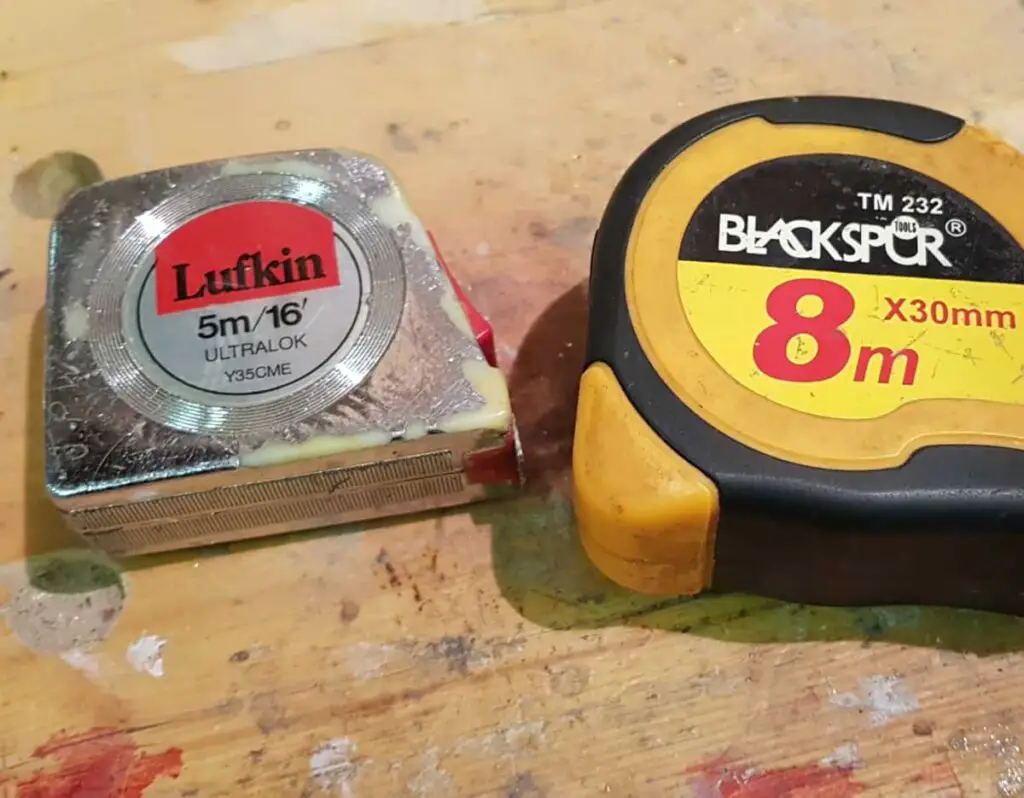
6. Retractable steel tape measure
A retractable tape measure is a space-saver you can easily carry in a pocket. Auto or manual retraction pulls tapes back into their holders. There are several uses, including determining a room’s size or the length of a piece of fabric. Holding it firmly and extending it fully is vital to get an accurate reading.
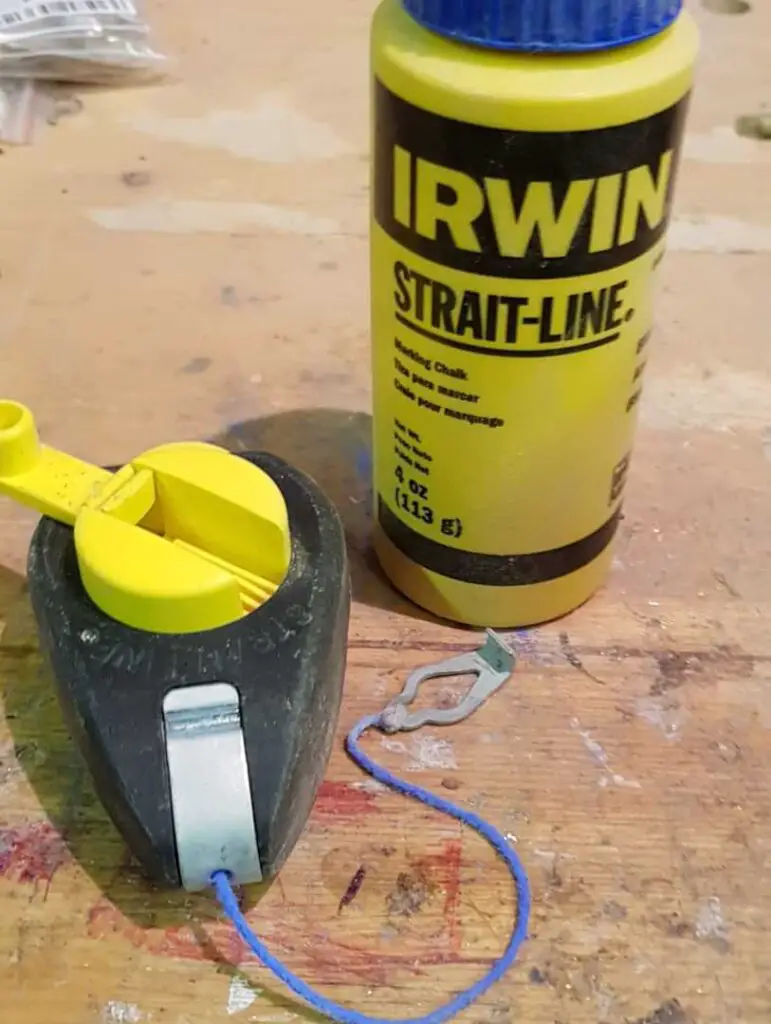
7. Chalk line
A builder’s line and chalk is valuable for creating straight lines on any flat surface. It can lay out boundaries, paths, or anything else. Creating crisp lines they are also temporary, so you can erase them if necessary.
There are a few things to keep in mind when using them:
- The item you’re working on must be spotless and dry before you begin.
- Snap the string quickly and evenly to avoid creating a wavy pattern.
- Use a clear protective coating that protects chalk lines from the elements to extend their life.
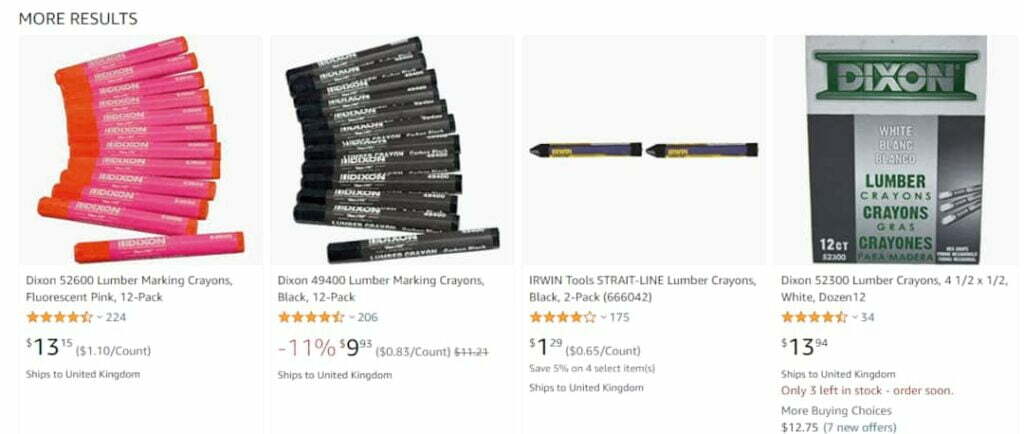
8. Lumber crayons
For identification, lumber crayons mark lines on the rough lumber. They vary in size and colour, often used with simple tools such as saws and planers.
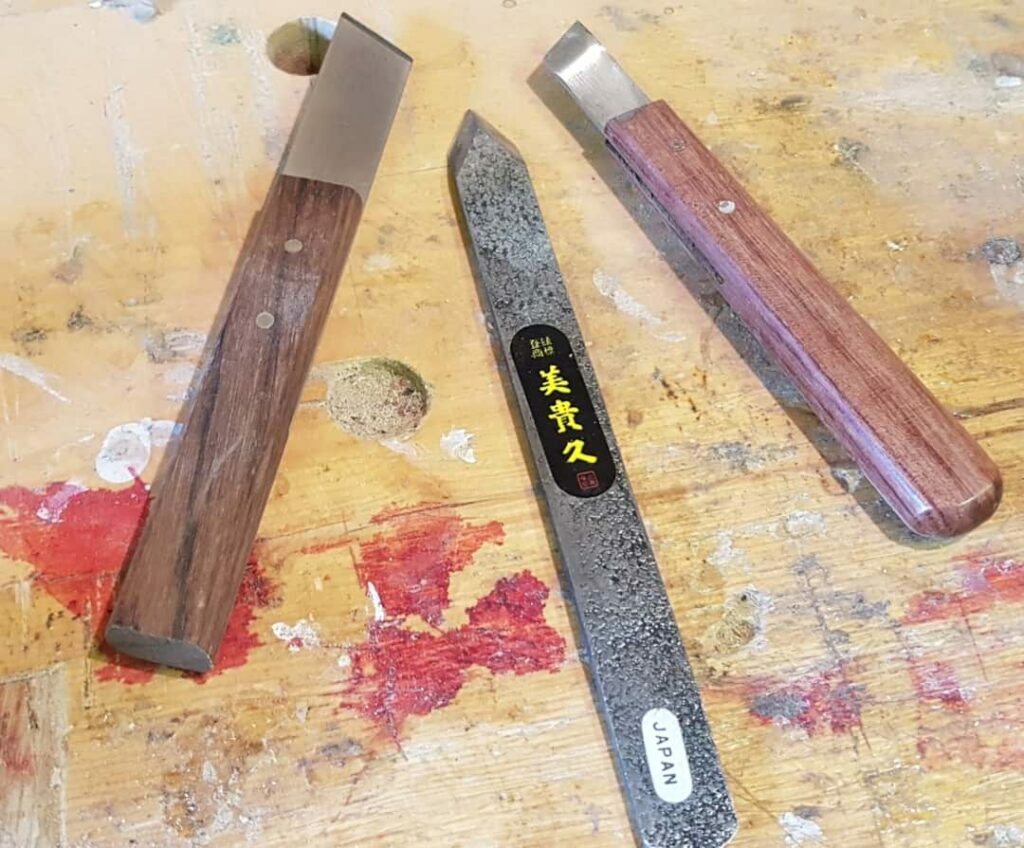
Mechanical pencils vs marking knives
A marking knife has a single slope and makes consistent markings, while carpenters’ pencils might not. Knives are used for a detailed cut, not just horizontal lines and shapes.
Pencils are the most common tools used for carpentry. They can produce quick fine markings for shapes or dimensions. But, it can be difficult to achieve precision, and the retractable pencil line can be easily erased or smudged.
The steel blade allows you to place chisels or a sawblade in the kerf with accuracy. There are spear point or left and right-hand versions available. Some people try to use a Stanley knife, but the double bevel leads to inaccuracies.
Woodworking angle measuring and marking tools
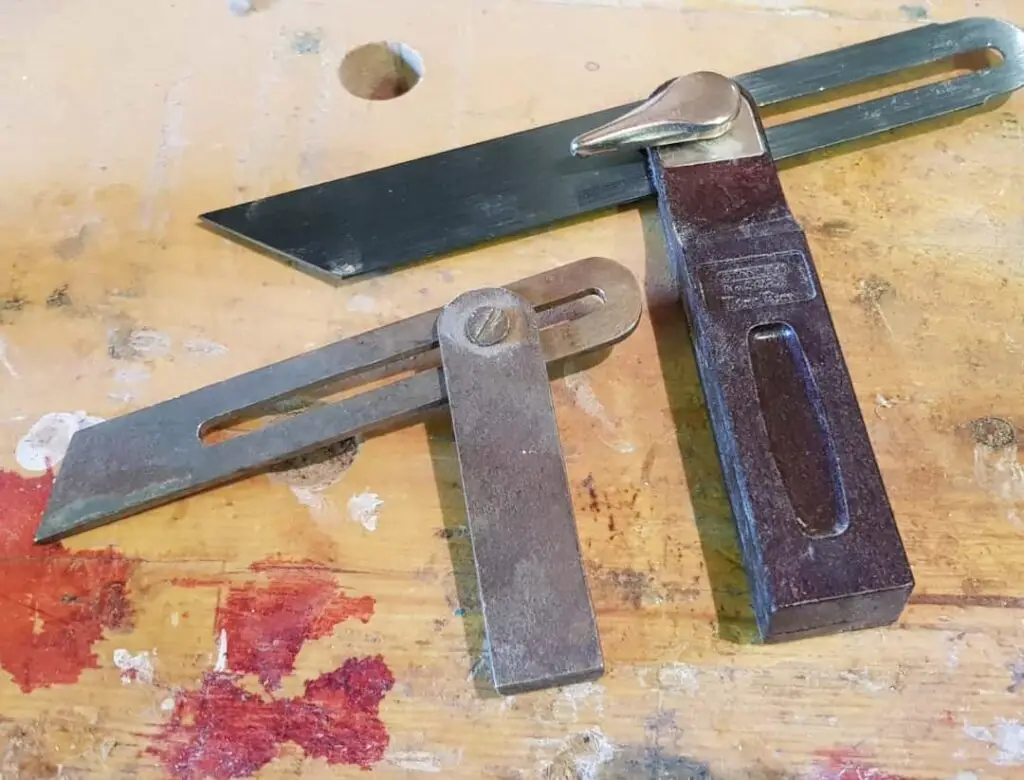
10. Sliding t-bevel
A sliding bevel is adjustable for transferring mitre angles. The sliding bevel gauge can copy any pitch onto another piece. Make sure it slides with a smooth action and has a good locking mechanism for reliable work.
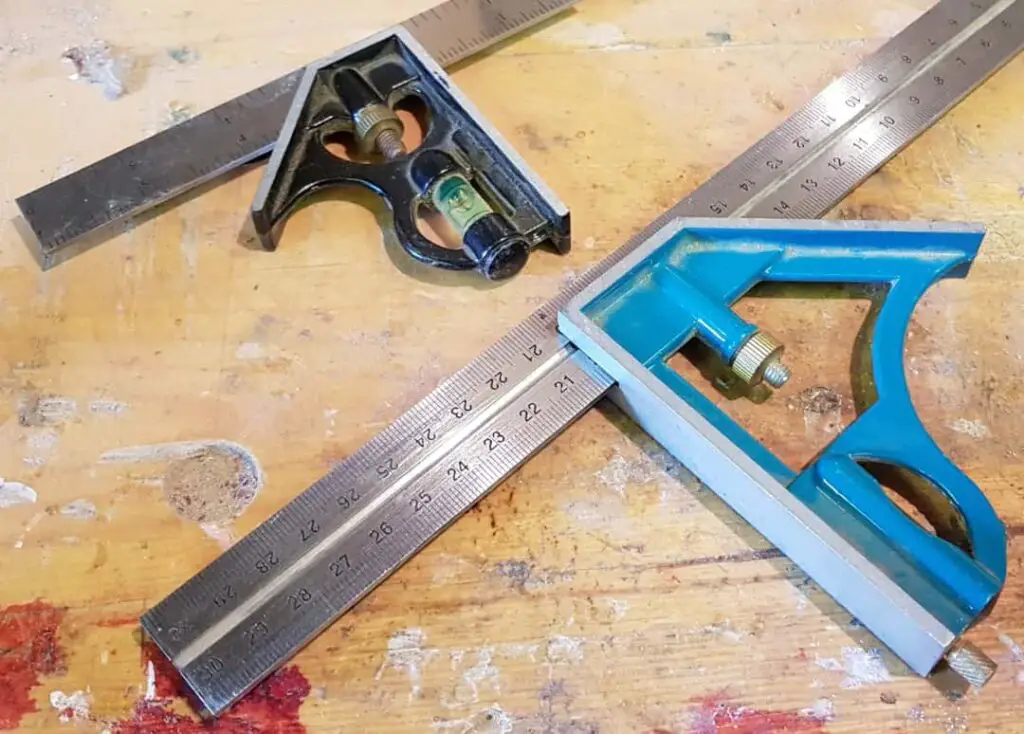
11. Combination squares
A four-piece combination square can be used to measure different angles on pieces of wood. When buying combination squares, they are available as 6 or 12 inches. They can be purchased with other attachments for marking angles in various ways.
This 12-inch square is versatile and has multiple uses. Slide the bar to adjust the length and precisely measure the board width. Additionally, the bearing surface allows you to scribe 90 and 45 degrees.
In addition, it is excellent for tasks such as finding the depth of a deep hole or groove. For example, when chopping a mortise, you can use it as a depth gauge. Furthermore, it can find the centre of the boards. Just adjust close to what appears to be the centre and mark from both sides. Then make marks between those two marks with a sharp pencil.
Prices vary, so buy the best you can afford, and you won’t regret having it on your bench.
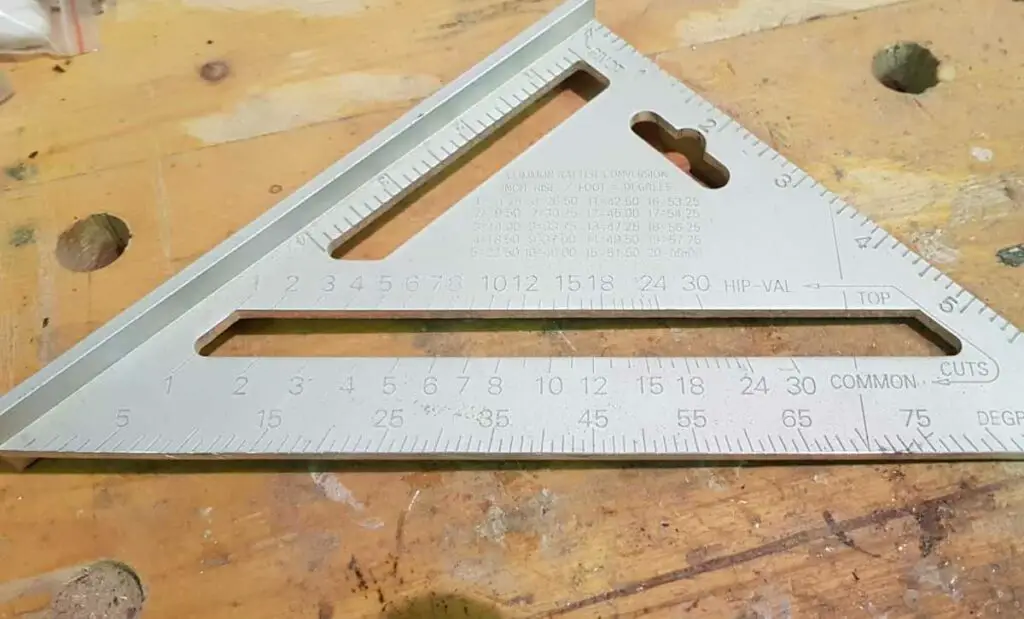
12. Speed square
A speed square is an accurate layout tool to form pitches on rafters. There are different sizes, from 7″ to 12″ in length. They are manufactured from a variety of materials, such as alloy or composite HDPE. With heavy-duty construction, they will keep the factory settings.
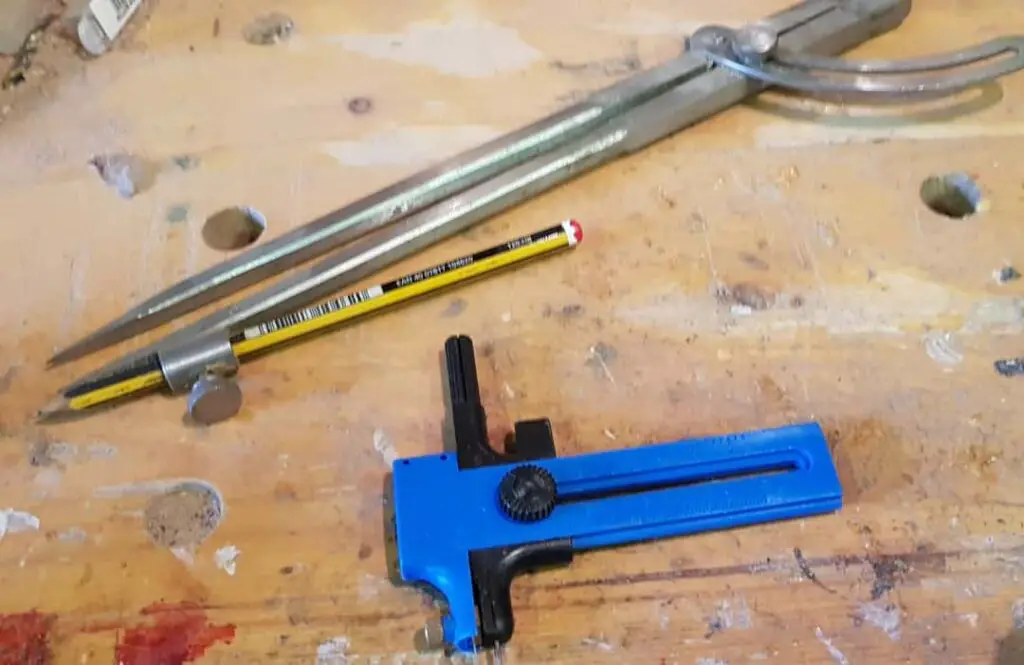
13. Layout compass/dividers
A pair of Dividers can take detailed measurements and draw circular rings, arcs or curves. They can be bought new or secondhand, and customised versions can be costly. If exact measures are important, spending the extra on the 12″ models is a good idea. You can search for vintage ones on eBay, while new marking measuring tools for woodworking are available on Amazon.
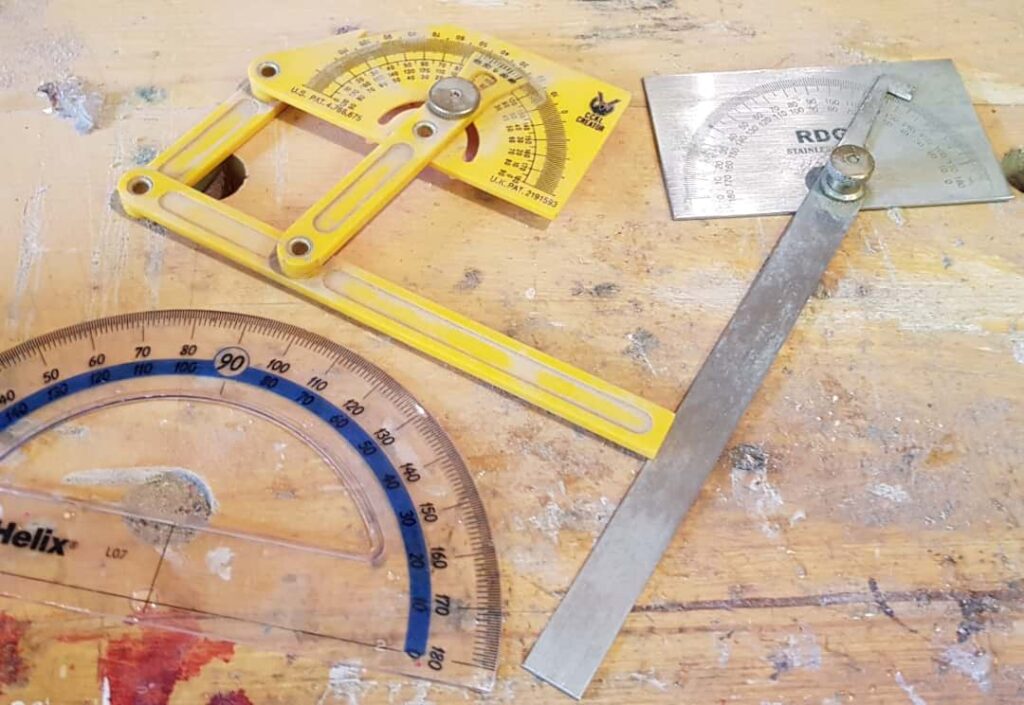
14. Protractor guide
A protractor is a tool that helps you marking angles accurately. A great choice for all sorts of woodworking projects. The head is satin-chrome, anti-glare Japanese stainless steel. The unique indicator arm avoids parallax errors, making it even more reliable. The scale on the head is also perfect to set up a mitre saw.
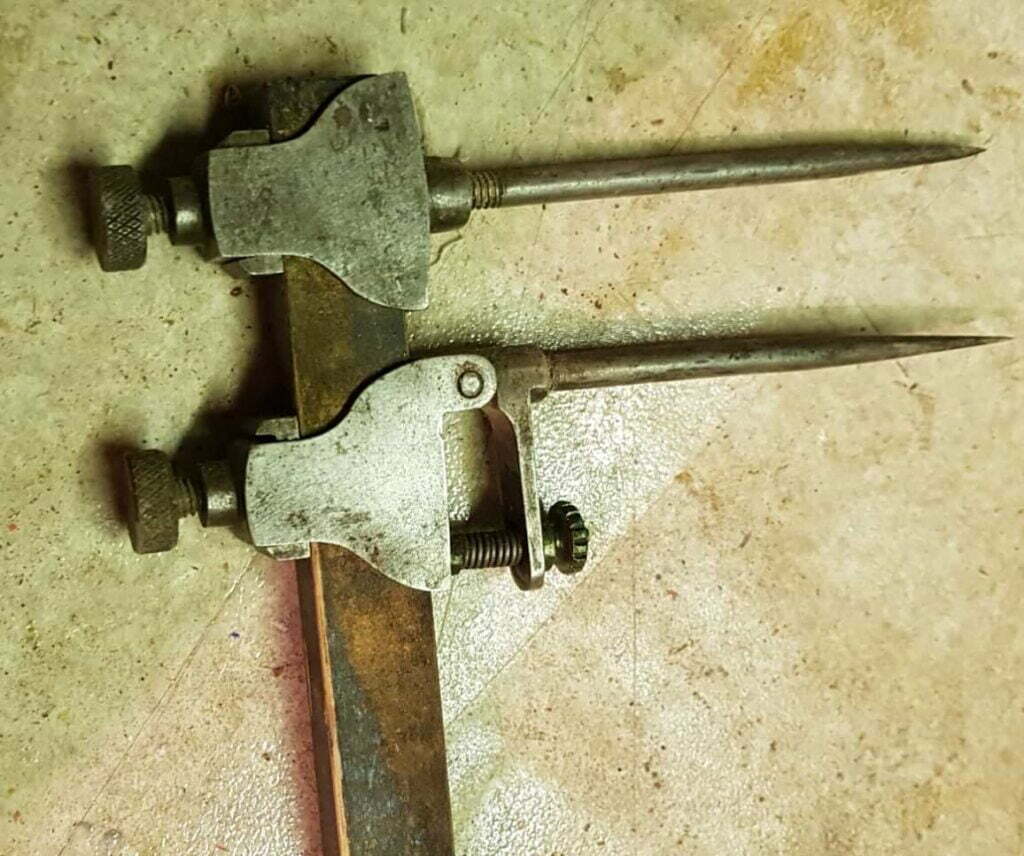
15. Trammel points
Though they are great, the 12″ compass will only go so far; for laying out a tabletop, you need a trammel. Trammel points are small spikes attached to a wooden beam. They help position a workpiece or for copying a shape from one piece to another. Trammels work like a scratch gauge and can create different-sized circles.
What is the best way of marking holes in woodwork?
You can mark holes in woodwork in a few different ways, depending on what they are for. If you’re looking to mark the location of a hole, you can use a ruler and pencil.
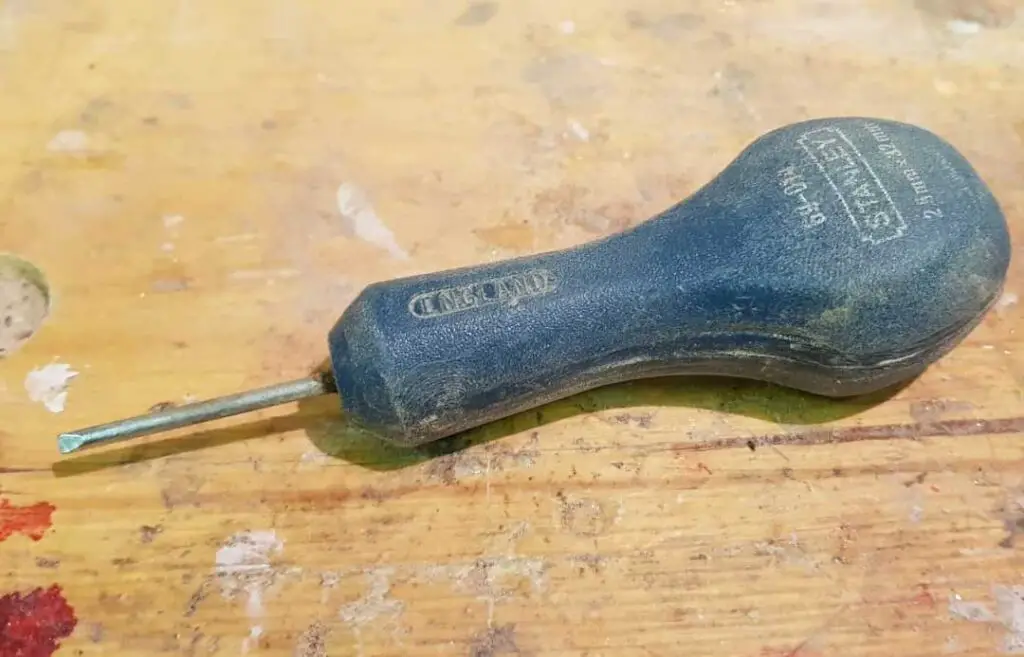
16. Birdcage awl
A birdcage awl is used for creating indents in drawings and layout plans. It has a chisel tip to mark drillbit centres and bore holes with a reaming action.
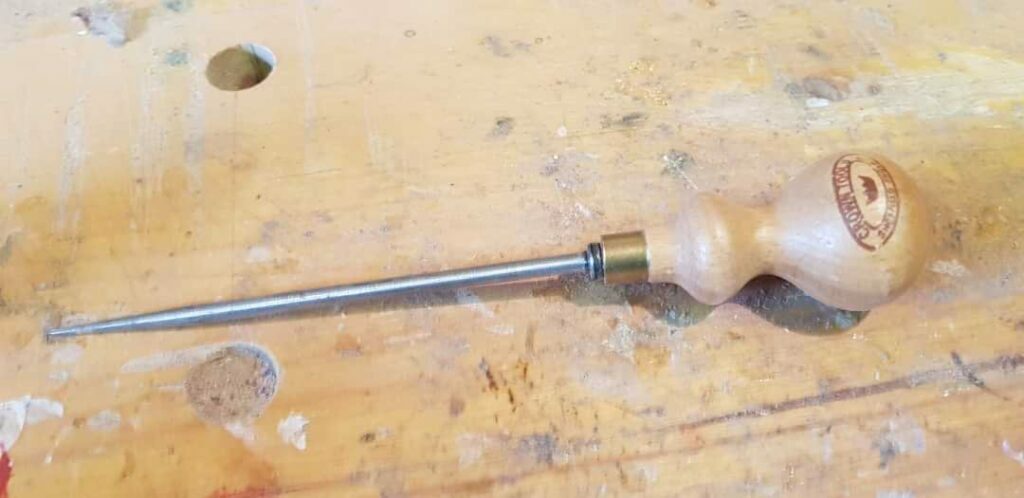
17. Awls for scratching
A scratch awl is used to scribe a line so that a fine saw or chisel can be run properly. When using it as a point marker, it is crucial to hold the handle perpendicular to the board. To start, press down on the tool shaft and drag it across the smooth surface. The result is thin but deep enough for edged tools to follow.
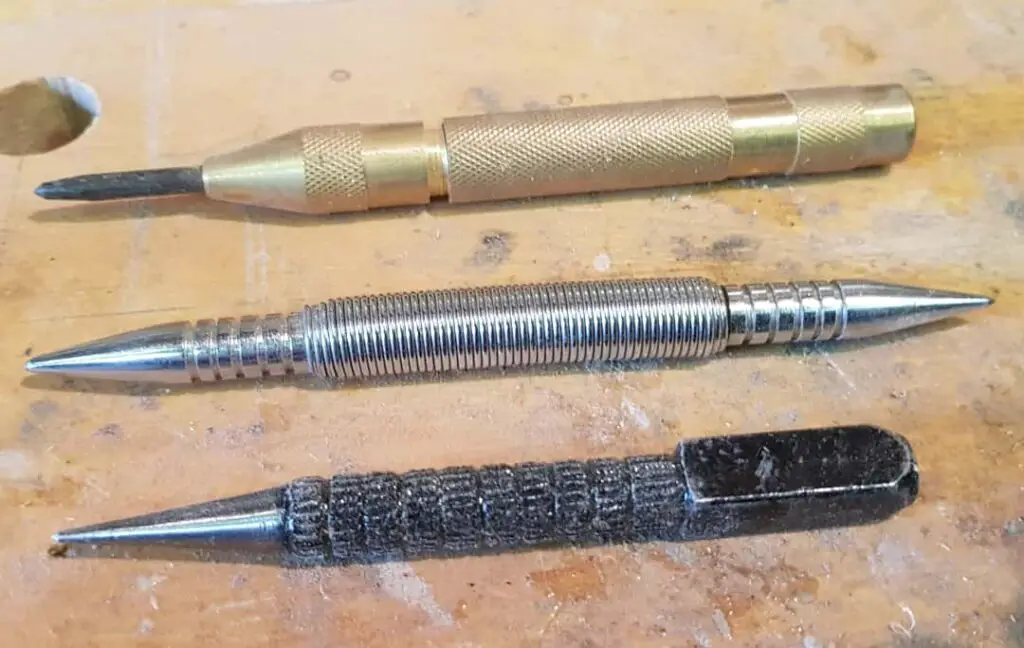
18. Automatic centre punch
A centre punch is a tool to mark the centre of an object. It is usually employed to mark a center hole when drilling to prevent wandering. Thanks to the automated centre punches spring-loaded mechanism, you may forego using a hammer. Just push it down until the mechanism fires.
Luxury and specialist equipment
These advanced accuracy woodwork measuring tools make working simpler and more exact. Nearly all of them will permanently reside on the benchtop. You’ll still be happy to have them for a particular wood crafting project if they don’t.
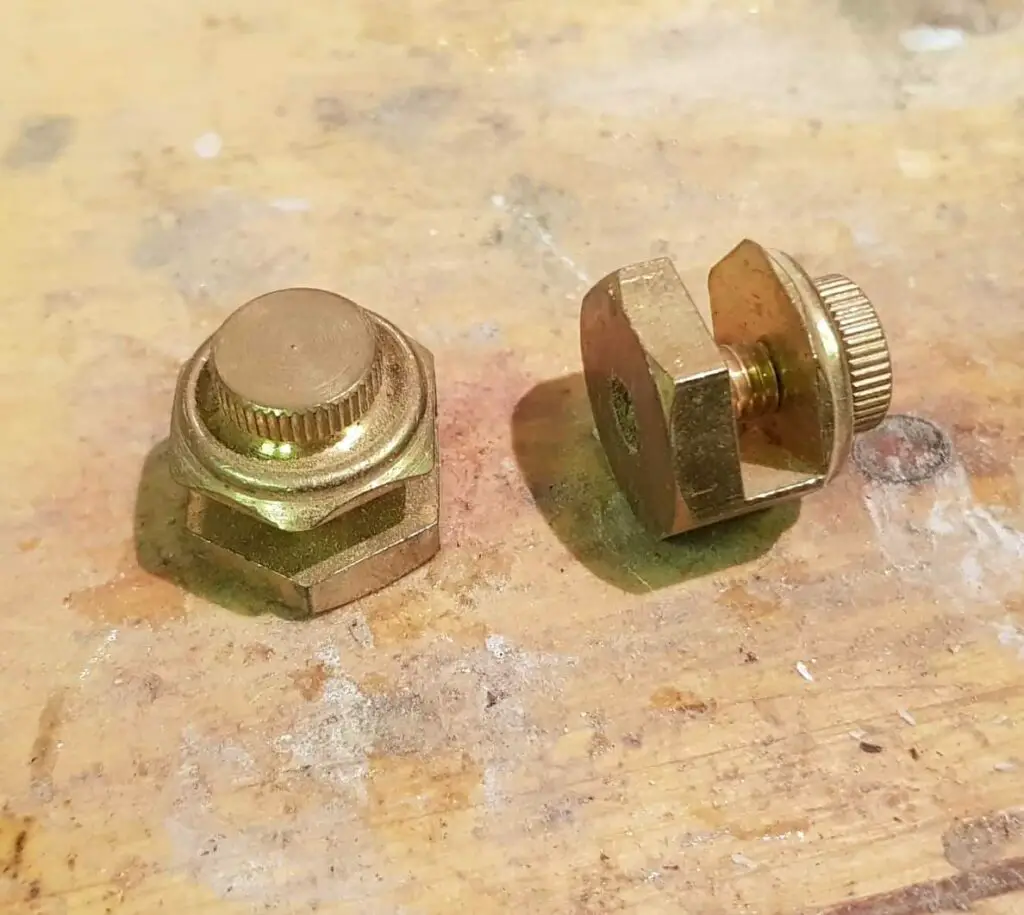
19. Stair gauge set
A stair gauge set is a great accessory for your framing square. This is employed in cutting risers or rafters for hip, tail, and bird mouth joints.
First, use the clamps to align the square with the reference edge. Then, use the stops against the riser. This ensures that the inch marks are still correct. Finally, indent where you want your cut.
20. Adjustable hook ruler
The hook rule is the most reliable item when taking basic measurements from aboard. The hook on one end ensures direct measurement, unlike the end of a retractable tape. The hook catches on the back of a board for a reference point, preventing mismeasurement. When marking measuring from edges, this should be your first choice.
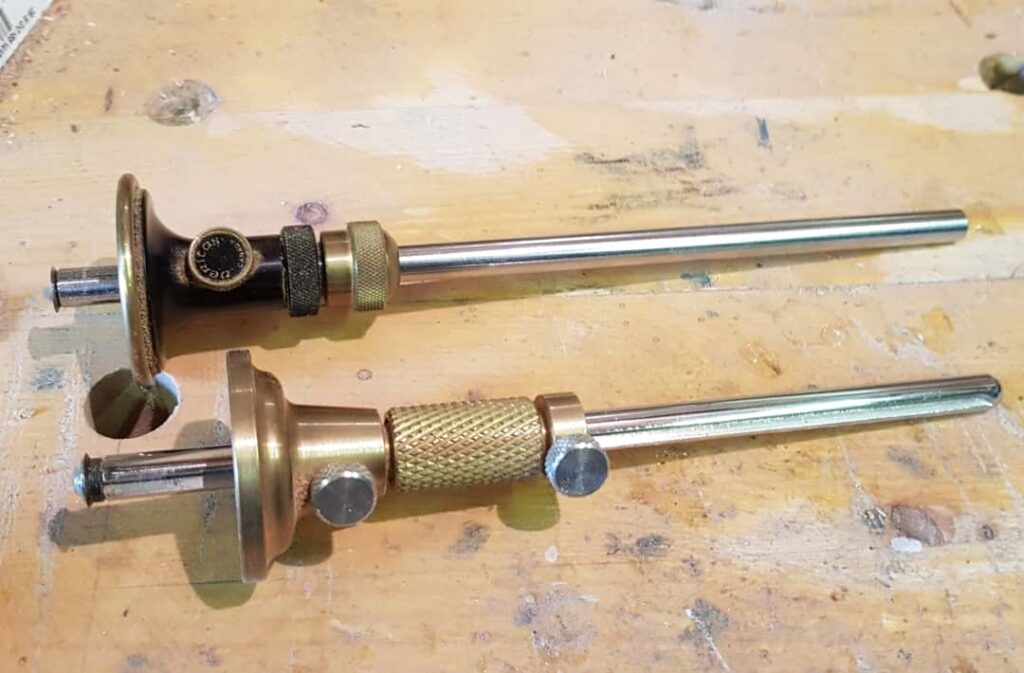
21. Wheel marking gauges
A wheel gauge provides smooth adjustments with clean cuts through the grain and on end grain tenons. The hardened metal blade can easily slice through wood fibres without tearing them.
First, loosen the knurled thumb screw and slide the rod to the required depth of cut. Finally, tighten the locking screw to lock it in place and scribe away.
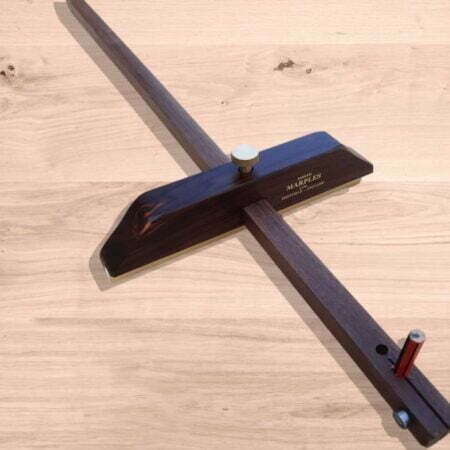
22. Panel gauge
A panel gauge marks out a wide board. This is usually done to show where to cut the board. They can be found on the antique market and can be purchased for around $25. You can build your own if you have time and some metalworking skills.
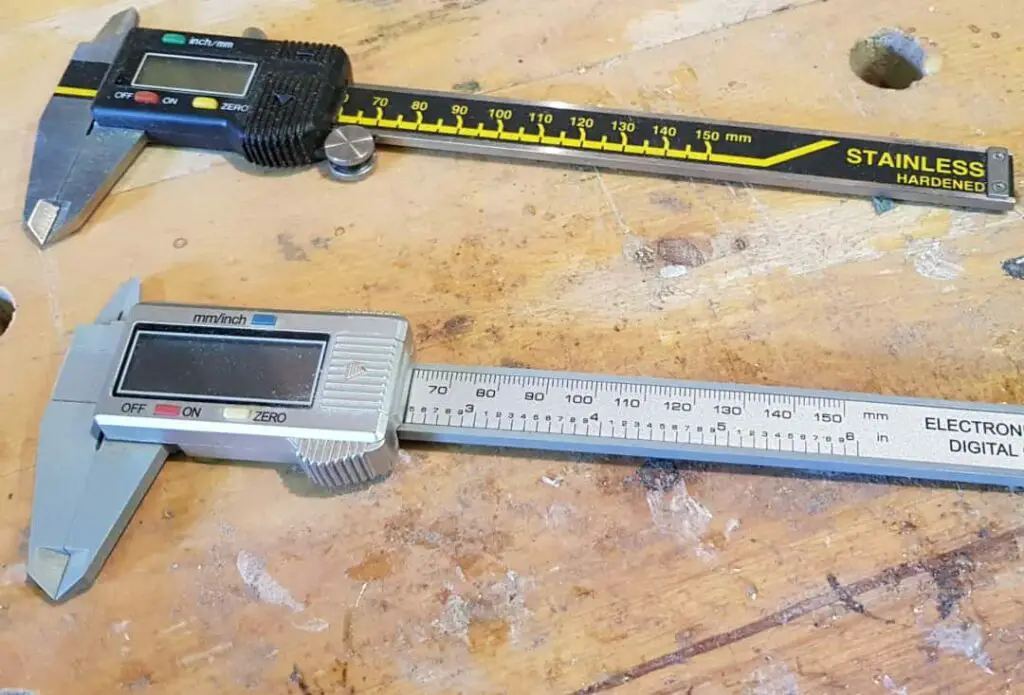
23. Digital calipers
Digital callipers are for taking precise measurements of an object. The distance between the calliper jaws informs you of the overall size. A button allows switching between metric and imperial. So many uses; with the tail, you can get the depth of a screw hole or inside dimensions.
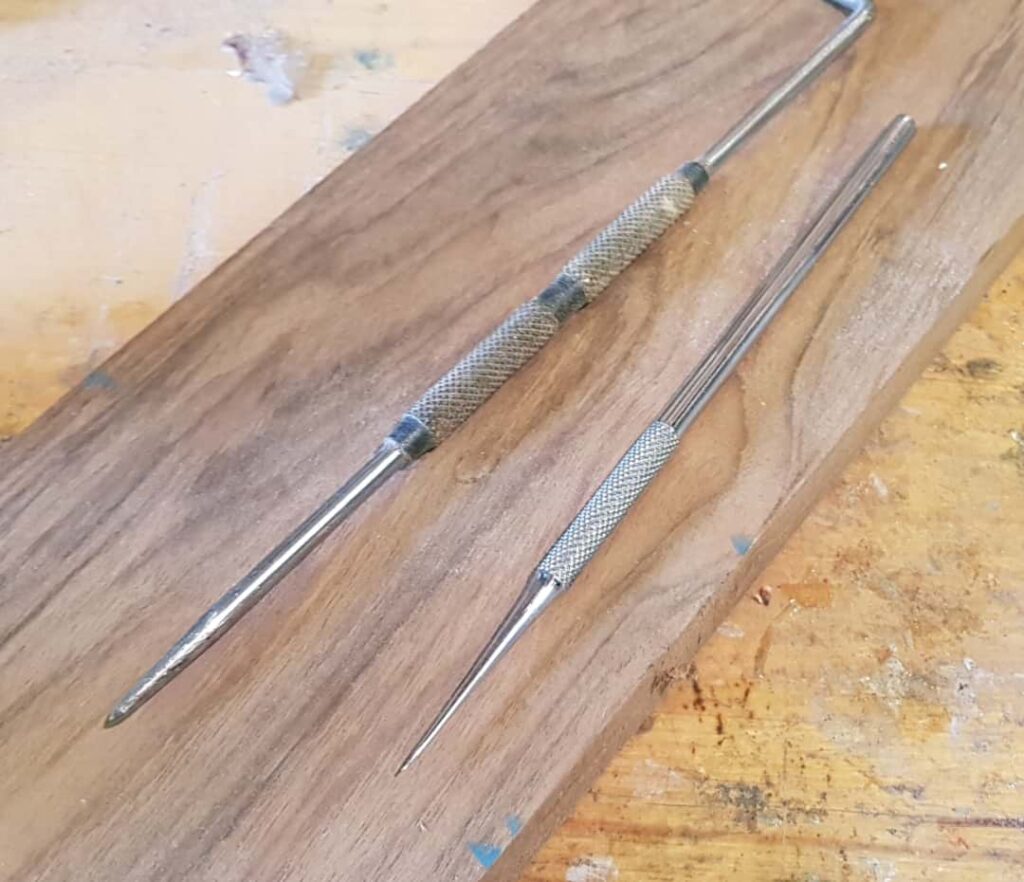
24. Carbide scribe tool
Metalwork is a necessary evil for most woodworkers at some point. A carbide scriber tool is a basic device with a very sharp point. One may compare it to a striking knife for metal. It works in any solid material, even the hardest metals.
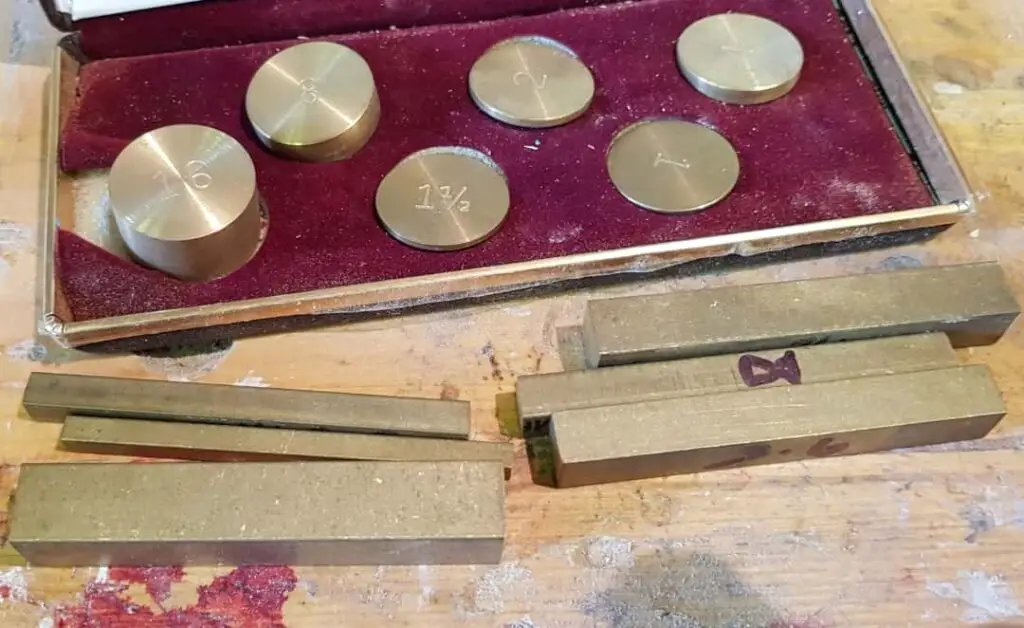
25. Brass setup blocks
Brass setup blocks are ideal for machine work, adjusting your router bit or table saw blade height. The selection of eleven sizes from 1/8″ to 3/4″ in 1/16″ increments offers greater flexibility. The bars can be stacked if needed for a bigger height. Most blocks come with a pre-marked size which makes using them a breeze.
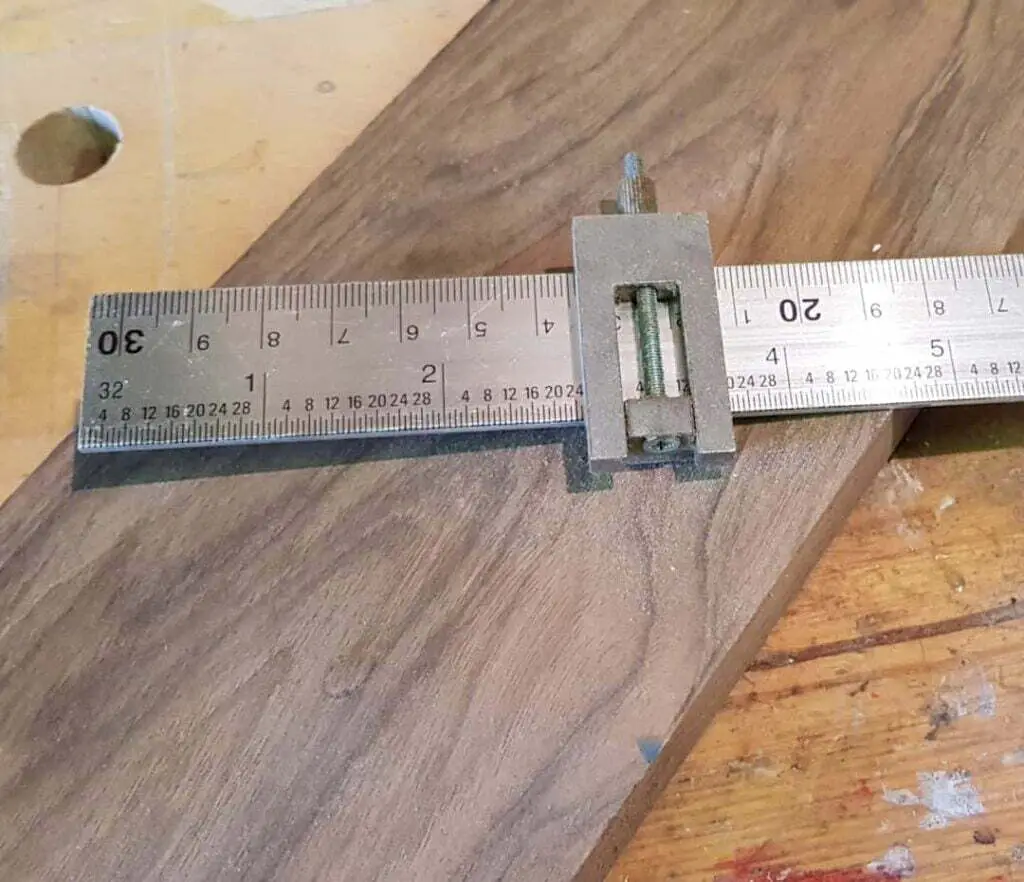
26. Ruler stop
A ruler stop is a handy attachment that helps ensure repeatable marks. The angled slot grips virtually any item up to 1 3 ⁄ 16″ wide, so it is ideal for using with a variety of brands.
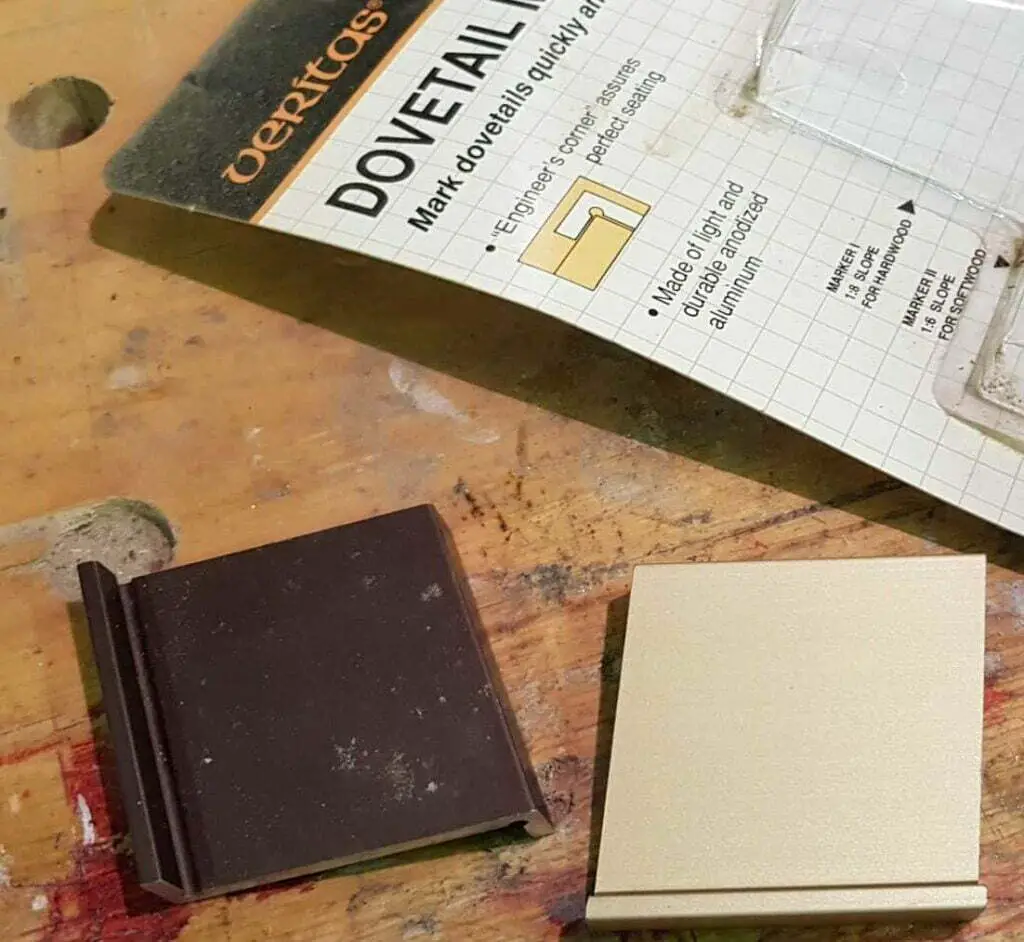
27. Saddle marker
A saddle or dovetail marker is a tool used for laying out dovetail joinery. Once glued, a joint requires no mechanical fasteners. The precision CNC machining has a black finish and graduated imperial scale. The slopes of 1:5 on one side and 1:8 on the other. The inner cutouts offer additional slopes of 1:6 and 1:10.
Manufactured from anodised aluminium with a red/black finish which is a valuable aid for corner marks. The imperial graduations on this instrument guarantee an excellent design every time. The bottom corners and underside are relieved for an even more precise setting out.
Advantages of good workshop marking tools
Accurate tools for measuring are vital for sawing and chiselling. The essential woodworking marking tools are straightforward and effective. Newer tools may have different features but are not necessarily better.
What are the top brands for accurate measuring tools in carpentry?
There are many different brands of tooling manufacturers. Some stand head and shoulders above the rest for a good reason. To list all is beyond the scope of this guide, so we will look at a few notable names below:
Joseph Marples
You should check out these products if you are looking for easy-to-use tools. Their expertise as tool makers with woodworking tools since the 1840s shows. The firm provides gauges and other measuring devices for woodworking projects.
Woodpeckers
Woodpeckers have a reputation for high-quality woodwork measuring tools designed for precision. Founded in 1988, it specialises in T-tracks, stops, and router table accessories. These modern tools can be used with pinpoint precision because of the slits in the middle. Everything is made in the US from airforce grade aluminium.
Veritas
Innovative design lies at the heart of the brand known for its woodworking equipment. The firm makes several goods for the discerning woodworker. Engineers and industrial designers manufacture its superior items. Lee Valley’s sophisticated production plant serves clients globally.
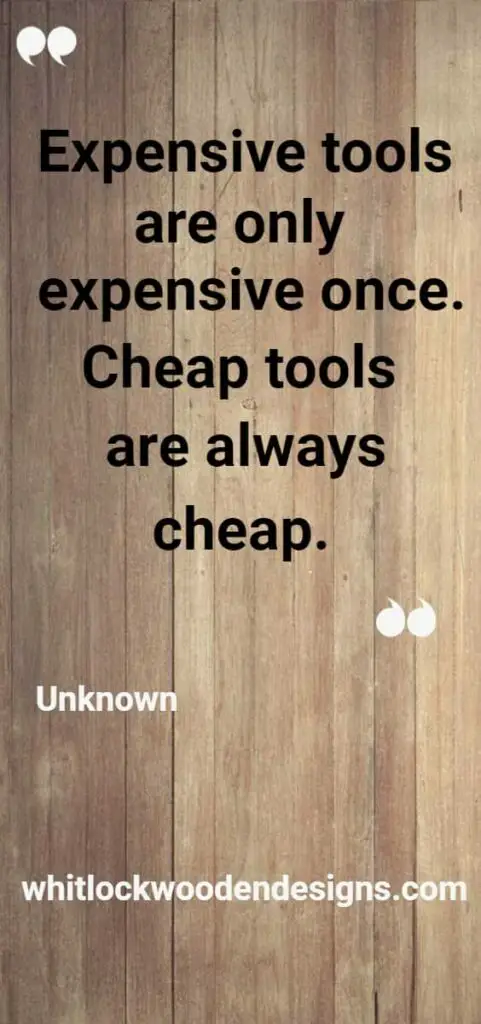
What is the price range of woodworking measurement tools?
The classic tools are efficient and reliable, but they don’t have a lot of bells and whistles. They can be picked up for not much at all with beech or plastic handles.
The newer tools are better, but they can be expensive. For precision jobs, though, they’re worth the investment.
What are the reviews when buying tools?
- Imperial tape – Indispensable for all work, a good model should be easy to read and have a durable case.
- Rules – A good rule should be robust and have clear metrics.
- Layout squares – A necessary tool for many things, good squares should be durable.
- Gauges – Woodworking marking gauges ensure accuracy and should be simple to read.
- Knives – Essential tools for many different jobs; they should have a comfortable grip.
- Markers – Important for making lines on wood; good markers should have a fine tip and be easy to hold steady.
Finally finishing up
So, what’s a good marking tool? It really depends on your needs and budget. For the most part, we recommend investing in the highest quality tools you can afford. You’ll save time and money by working fast and effectively with the correct tool collection. So, what are you waiting for? Buy The Best You Can Afford.

